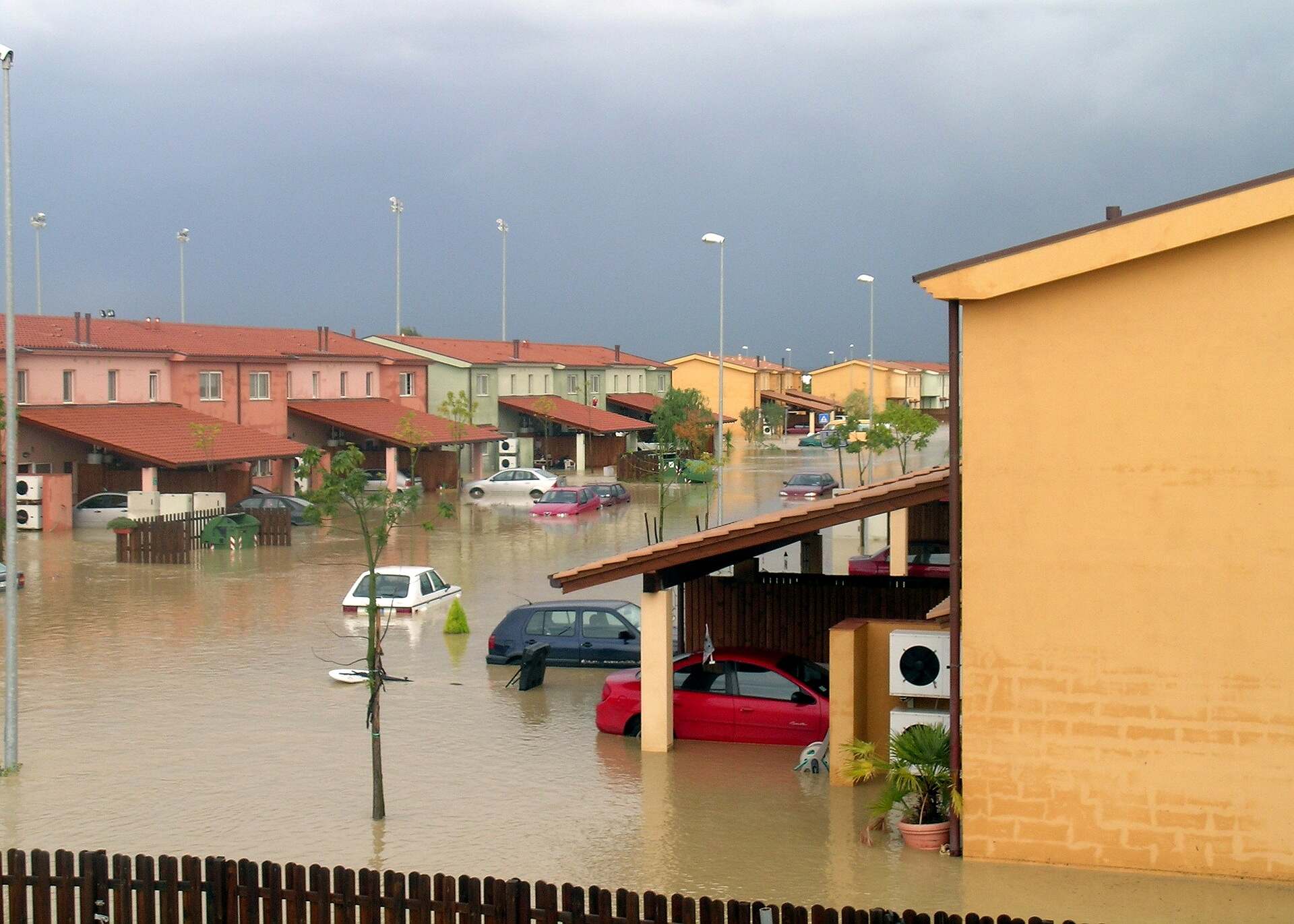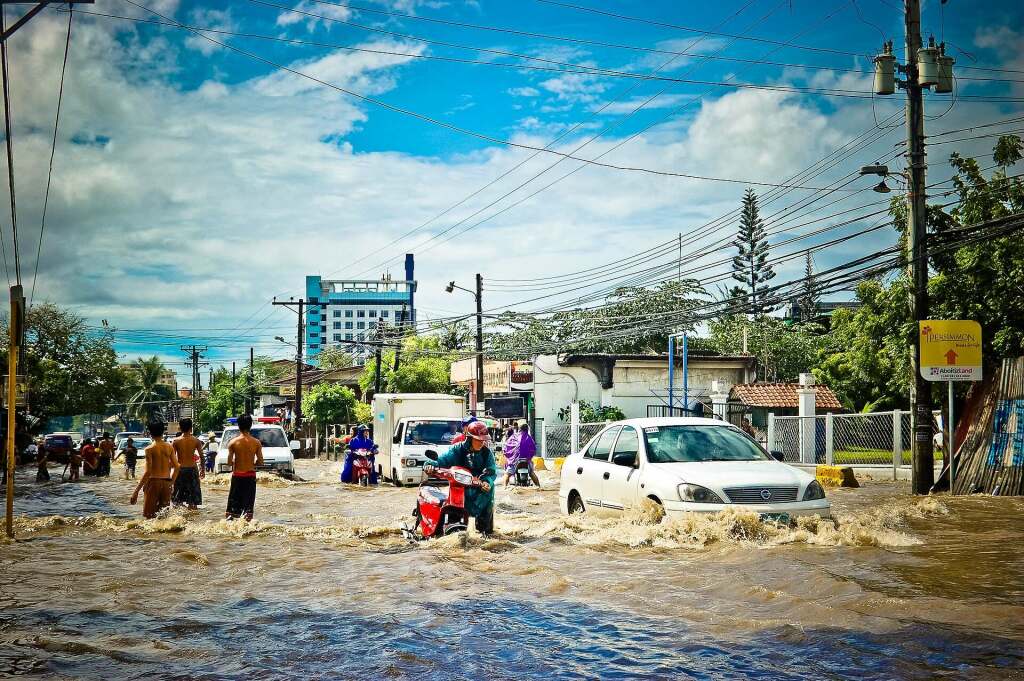
100-year weather events are a normal part of modern life now – local governments around the world must move faster to limit the damage they will cost. Flash flooding is the most common types of these once rear events – good news – the damage can be limited, for cheap.
Flash flooding can occur with little warning and can cause significant damage to homes, businesses, and communities. These increasing mega-downpours are happening more frequently around the world (often with devastating consequences), what can people and businesses do to fight back.
Here are three effective ways to mitigate or eliminate the damage from such events:
1. Implement Green Infrastructure

Rain Gardens: These are shallow depressions planted with native shrubs, perennials, and flowers located near runoff areas. Rain gardens help absorb excess rainwater, reducing the amount that reaches sewers and waterways.
Permeable Pavement: This type of pavement allows water to seep through it and into the ground below, decreasing surface runoff and reducing the risk of flash floods.
Green Roofs: Installing vegetation on rooftops can help absorb rainwater, provide insulation, and reduce the volume of water that must be managed during heavy rains.
2. Enhance Community and Urban Planning

Floodplain Management: Avoid building in flood-prone areas and restore wetlands which naturally absorb and manage floodwater.
Improved Drainage Systems: Regular maintenance of drains and installation of advanced drainage solutions can greatly reduce the likelihood of flash floods. This includes cleaning out blockages in existing drains and designing new developments with adequate drainage.
Zoning Regulations: Implement zoning laws that restrict construction in high-risk areas and require specific building elevations or flood-proofing measures for buildings in moderate-risk areas.
3. Adopt Advanced Warning and Rapid Response Systems
Early Warning Systems: Invest in meteorological technology to provide accurate and timely warnings to residents about impending heavy rains and potential flash floods.
Community Alert Networks: Establish a system to quickly disseminate flood warnings via mobile phones, radio, and other local media.
Emergency Preparedness Plans: Develop and regularly update emergency response plans. Conduct community drills to ensure everyone knows what to do in case of a flash flood, including evacuation routes and safe zones.
In conclusion
By integrating these strategies, communities can reduce the impact of flash flooding and enhance their resilience against future weather-related disasters. We must support local and national politicians who understand this new peril flash flooding and whom also have sane plans to combat it.
In the meantime, if you’re planning an upcoming move to a new city, you’d be advised to check their planning and “current” infrastructure implementations to deal with flash floods.


